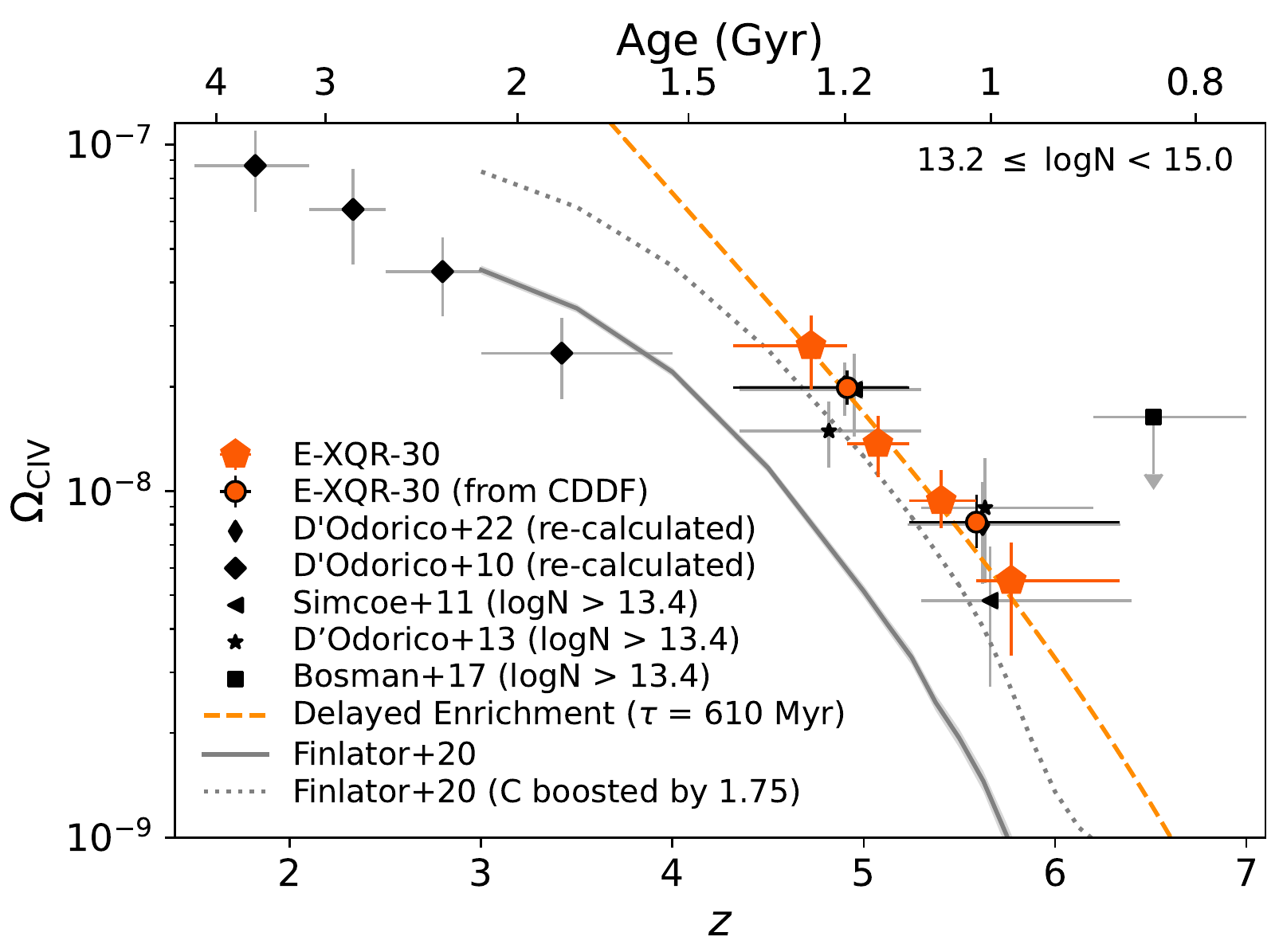Chemical Enrichment and Ionization in the Early Universe
Absorption lines due to the triply ionized carbon, C IV, trace gas in the circumgalactic and intergalactic medium around galaxies. The C IV content of the Universe is sensitive to both the overall carbon content, which is regulated by chemical enrichment and outflows, and the ionization state of carbon, which depends sensitively on the shape and strength of the ultraviolet background. The ultraviolet background is expected to change rapidly near the end of the epoch of reionization, and therefore C IV absorbers are an important probe of this transformative period in the Universe’s history.
We analysed a sample of 260 C IV absorbers from the E-XQR-30 metal absorber catalog ( Davies et al. 2023b) and found that the C IV content of the Universe increased by a factor of 5 between z~5.8 and z~4.7; a period of only 300 million years (see Figure). This is significantly more rapid than the growth observed at z < 4. The large sample size enabled us to constrain the evolution of the C IV column density distribution function and show that its slope does not change significantly as a function of redshift.

Assuming that the carbon content of galaxy haloes evolves as the integral of the cosmic star formation rate density (with some delay due to stellar lifetimes and outflow travel times), we show that chemical evolution alone could plausibly explain the fast decline in C IV over 4.3 < z < 6.3. However, the C IV/C II ratio decreases at the highest redshifts, so the accelerated decline in C IV at z < 5 may be more naturally explained by rapid changes in the gas ionization state driven by evolution of the UV background towards the end of hydrogen reionization.
